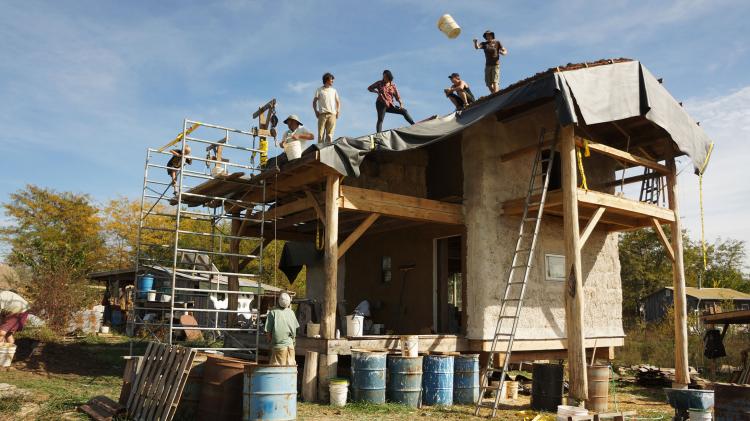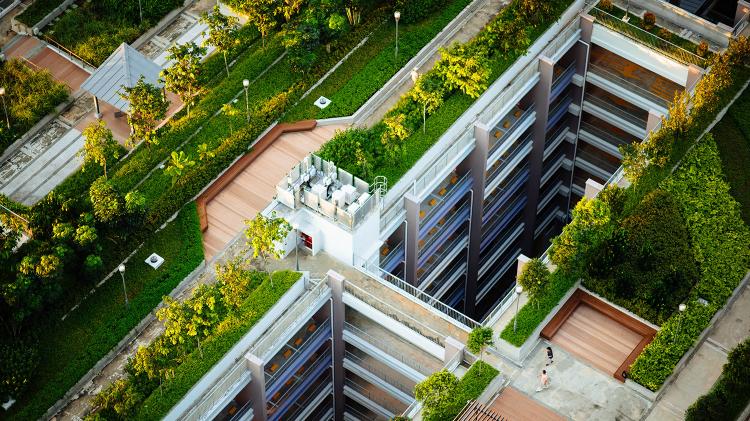
Use innovative technology
Many innovations can make a difference on climate change at domestic level. These may be high tech, like smart glass, self-driving cars, biodigesters, bioplastic and smart thermostats, or low tech, like green roofs, hemp clothing and biochar. Look for them coming to market and use those you can.

Project Drawdown is a world-class research and communication organization that serves as a non-partisan, non-commercial, highly-trusted source of information about solutions to reverse global warming. They have identified 100 existing, science-based solutions to global warming, including a number of technological innovations. Some of the solutions are still being tested or require major investment in kit, but many are simple and increasingly accessible to individuals and communities. The information below is reproduced with permission from www.drawdown.org, and copyright remains with them.
Bioplastic
If bioplastics capture 49 percent of the market by 2050, 4.3 gigatonnes of emissions are avoided.
Globally, we produce roughly 310 million tons of plastic each year. Almost all of it is petro-plastic, made from fossil fuels. 90 percent of current plastics could be derived from plants instead. What affords plastics their malleability are chainlike polymers. Potatoes, sugarcane, tree bark, algae and shrimp all contain natural polymers. Most bioplastics are used in packaging, but they are finding their way into everything from textiles to pharmaceuticals to electronics. Bioplastics can sequester carbon, especially when made from waste biomass.
Smart Glass
Adopting smart glass can result in 2.2 gigatonnes of emissions reductions.
Various measures can improve a window’s efficiency: layered panes, reflective low-emissivity coatings, insulating gas between panes and tightly sealed frames. More adaptive technologies, dubbed “smart glass,” make windows responsive in real time to sunlight and weather, improving heating, lighting and cooling efficiency. Thermochromic glass is triggered by heat; based on outside temperature, it transitions automatically from transparent to opaque and back again. Photochromic windows operate on the basis of light exposure. Currently challenged by cost, smart glass will become much more common in the coming decades.
Methane digesters (small)
By 2050, small digesters can result in 1.9 gigatonness less carbon dioxide emissions.
Organic wastes can emit methane as they decompose, with a warming effect 34 times stronger than carbon dioxide. One option is to control decomposition in sealed tanks called anaerobic digesters. They harness the power of microbes to transform scraps and sludge into biogas, an energy source, and solids called digestate, a nutrient-rich fertilizer. Biogas can reduce demand for wood, charcoal and dung as fuel sources and therefore their noxious fumes, which impact both planetary and human health. Digestate enriches home gardens and small agricultural plots.
Biochar
Biochar can produce 0.8 gigatonnes of carbon dioxide emissions reductions by 2050.
Biochar is commonly made from waste material, ranging from peanut shells to rice straw to wood scraps. During the slow baking of biomass in the near or total absence of oxygen, gas and oil separate from carbon-rich solids. The output is twofold: fuels that can be used for energy and biochar that can be used to enrich soil. Biochar retains most of the carbon present in biomass feedstock and buries it. That carbon can be held for centuries in the soil. Theoretically biochar could sequester billions of tons of carbon dioxide every year.
Smart thermostats
If 704 million homes have a smart thermostat by 2050, reduced energy use could avoid 2.6 gigatonnes of emissions.
Thermostats are mission control for residential energy use for heating and cooling: 9 percent of energy consumption in the United States. At present, the majority of thermostats require manual operation or preset programming. Smart thermostats eliminate the capriciousness of human behaviour, thereby driving more predictable energy savings. Smart thermostats detect occupancy, learn inhabitants’ preferences, and nudge users toward more efficient behavior. The net effect is residences are more energy efficient, more comfortable and less costly to operate.

Green roofs
These technologies could reduce carbon dioxide emissions by 0.8 gigatonnes.
The average rooftop is brutal terrain, taking a beating from sun, wind, rain and snow. Green roofs, in contrast, are veritable ecosystems in the sky. They may support a simple carpet of hearty, self-sufficient groundcover; or they may sustain full-fledged gardens, parks, or farms. They provide living insulation. Because the energy required for heating and air-conditioning is curbed, greenhouse gas emissions are lower, as are costs. Cool roofs achieve similar impacts by reflecting up to 80 percent of solar energy back into space. They reduce the heat taken on by buildings and the overall urban heat island effect.
Industrial hemp
Hemp’s long, strong fibers have been spun into clothing for millennia. Today, hemp is used to produce paper, textiles, cordage, caulking, carpets and canvas. Hemp is a global warming solution less because of what it can do than what it can replace: cotton. Cotton is the dirtiest crop in the world with respect to chemical use and is largely dependent on fossil fuel inputs. Hemp cannot compete with cotton on fibre softness, but if cost competitive it could certainly replace half of the cotton in the world for everyday garments such as jeans, jackets, canvas shoes, caps and more.
Autonomous vehicles
The convergence of motion sensors, GPS, electric vehicles, big data, radar, laser scanning, computer vision and artificial intelligence is hastening the arrival of autonomous vehicles - cars that drive themselves. Experts predict they will make up 75 percent of road vehicles by 2040. Whether AVs will have a benign, neutral, or negative impact is unclear. How cars are owned and utilised today could not be less efficient: they are driven only 4 percent of the time. If mobility comes to be viewed as an on-demand service the material savings would be immense. The U.S. auto fleet could decline by 50 to 60 percent. But it would require a massive cultural shift.
Visit Project Drawdown for 92 more innovative solutions.
Picture credits: 1) Victor Garcia - unsplash.com 2) https://www.flickr.com/photos/smallape/8031207090/ 3) Chuttersnap - Unsplash.com
Research innovative technology related to climate change
Introduce an innovative technology at home or work
Tell others about successful innovations you’ve implemented
Campaign for wider adoption of innovative climate technology



